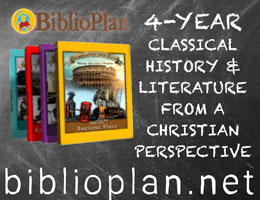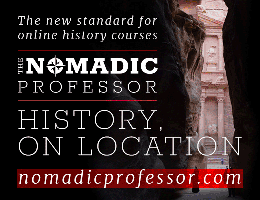The Living Geography Curriculum set makes Charlotte Mason’s methods for teaching geography practical for today’s homeschooling parents. Lisa M. Eveland has revised and updated the first book in Mason’s original series which was titled Geographical Readers for Elementary Schools (published in 1881). Eveland has also created ancillary materials that make it easy to use.
The Living Geography Curriculum set includes Living Geography Book I, Teacher’s Notes, Maps & Pictures, Exam Questions & Answers, and Geography Notebook. It can be used with children from about third grade through high school.
Contrasting the Original and Revised Versions
Living Geography Book I retains Mason’s presentation style and her Christian worldview. However, the revised version differs significantly from Mason’s original work. Mason was British, but since Eveland writes for an American audience, she has made revisions to reflect that viewpoint. For instance, in the lesson that introduces the idea of countries, Mason uses England as her example while Eveland uses the United States. Historical information has also been updated.
The original series was printed in black and white and had few illustrations, but this revised version has plentiful maps, photos, images of classical artwork, and other illustrations, most in full color. The maps and illustrations retained from the original have been re-digitized for clarity.
The chapters are reorganized with added material in new chapters and with a more uniform amount of material in each chapter. Poems were in the original, but more poems have been added along with passages from Scripture; most lessons begin with a poem while a few begin with Scripture.
Discussion questions from the original book have been moved to the Teacher’s Notes.
How the Revised Course Works
The course for Living Geography Book I has 40 lessons, and most lessons will take more than one session to complete. You might take two years to complete the course. The chapters are grouped into four units: Motion of the Earth, Measurement and Maps, Features of the Earth, and Countries and Governments. While lessons are primarily about geography, the last five lessons are about forms of political organization—e.g., kingdoms, countries, republics, monarchies, states, cities, and towns.
While the course begins with basic content about the spherical shape of the earth, it soon gets into more complex ideas such as latitude and longitude, the Prime Meridian, and identifying locations in degrees.
For those teaching children in grades three through seven, the Teacher’s Notes provide detailed lesson plans and much of the lesson content. It shows when to use pages in all the other resources. Those teaching students in grades seven through twelve can add the extra content for older students which I will describe later.
Each lesson presentation (after the first lesson) begins with a brief review that the parent facilitates using content and questions in Teacher’s Notes. Then the topic of the new lesson is presented. Next, pages to read from Living Geography Book I are listed, followed by a reminder to have students narrate back something about what they have heard. Eveland assumes that those using the course are already familiar with the technique of narration, but for those who are not, she has several blog posts on her website that can be found by searching for “narrations.”
Many lessons include demonstrations or activities: object lessons, map work, notebook entries, or outdoor activities. Maps & Pictures, a 27-page book, provides additional maps and images to support many of the lessons. The 29-page Geography Notebook has pages for students to complete charts and create drawings (e.g., drawing a room plan and drawing a map of their country).
Object lessons might require gathering resources or preparing in advance. If so, parents are told at the very beginning of the lesson. Resources for those activities are found around the house or should be easy to obtain. For instance, Lesson 15 requires a Styrofoam ball (Mason used an orange), yarn, a marker, and a flashlight.
Some video and website links included at the back of Teacher’s Notes are referred to as part of the lesson plans. (I don’t see why these weren’t incorporated into the pertinent lesson plans.)
The lesson material in Teacher’s Notes is written in an open-and-go fashion, and suggested answers follow each question. Check-off boxes help parents keep track of what’s been accomplished.
At the end of each lesson, parents are reminded to consider creating their own exam question (one or two per lesson) to focus on what was most important for that lesson. Parents have space to write these questions in the Exam Questions & Answers book. For each lesson, two lines are provided for questions for either younger or older students. A few additional, pre-written questions are included. In most cases, students will answer orally, although space is provided in the Exam book for parents to record students’ answers. Suggested answers follow each question.
For Older Students
Students in seventh grade and above are likely to find some of the content and activities too young for them and insufficiently challenging, so for older students, purchasers can request the zipped file with assignments, articles to read, internet links, and writing assignments. A list of assignments for older students is near the end of the Teacher’s Notes, but the actual articles and instructions for their assignments are in this separate file.
The assignments for older students parallel the same general topics as those covered in lessons for younger students. Older students participate in lessons with younger siblings to some extent, but some assignments take them off in different directions. For instance, the first few lessons in the main part of the course discuss the shape of the world, evidence for the fact that it is a sphere, the earth’s spin, shadows, and other related topics, while older students are also introduced to critical thinking, ways of knowing, and the concept of truth. Older students will read articles and write an essay in which they apply what they are learning, working on it over the span of the first 15 lessons.
For the rest of the course, older students will also read articles, visit websites, watch videos, draw plans (of a room and of their city or town), draw a map of their country, and read both their country’s and their state’s constitutions.
The Teacher’s Notes say that for each lesson older students will usually provide a narration pertaining to the previous lesson, their reading material, or other work they are doing. Those narrations can be written or oral.
In addition to all the lesson activities, Eveland suggests older students read a separate book about geography. (No recommendations are provided, but Eveland told me she's compiling a list and will put it on her website.)
The assignments for older students are very loosely developed in comparison to the rest of the course, and I suspect older students will want to skip some of the lessons and activities that cover topics they already know. Nevertheless, the material for older students allows parents to keep most students working on similar topics at the same time.
Summary
The Living Geography Curriculum set is a huge improvement over trying to use Charlotte Mason’s original work, and even more so for those living in the United States.










